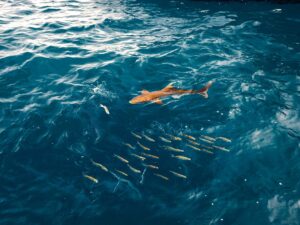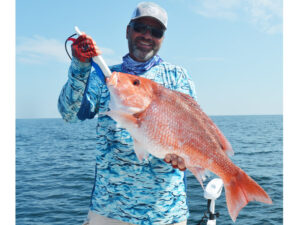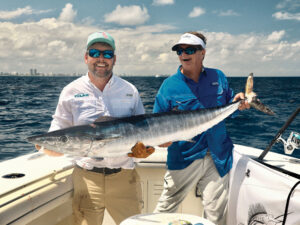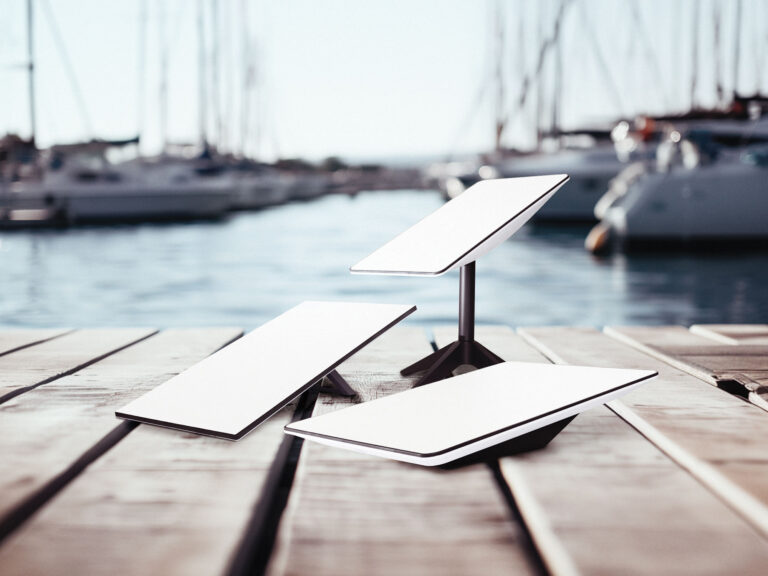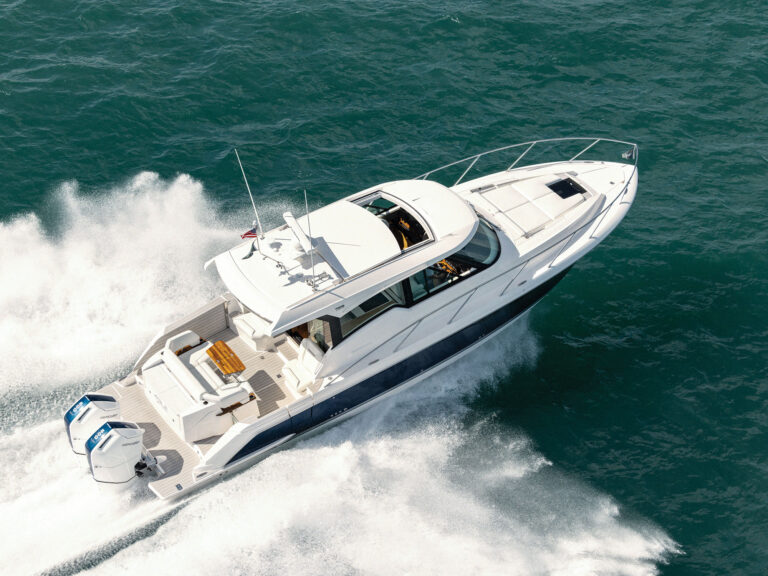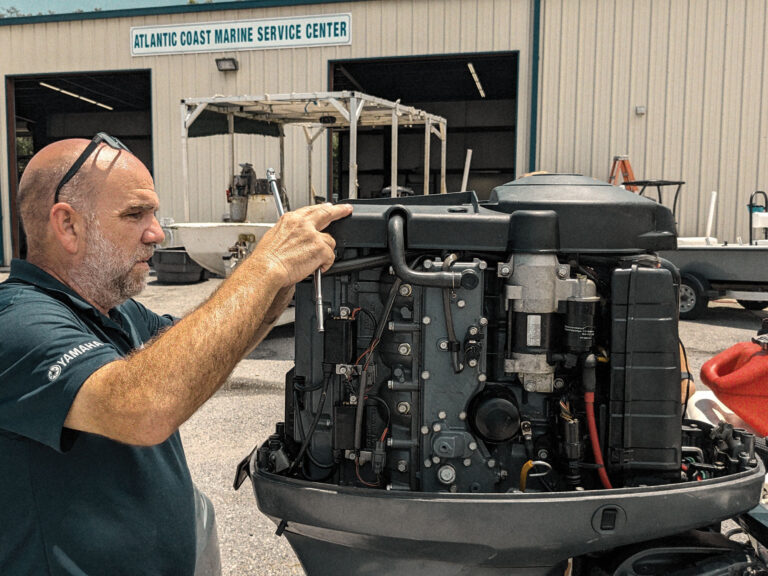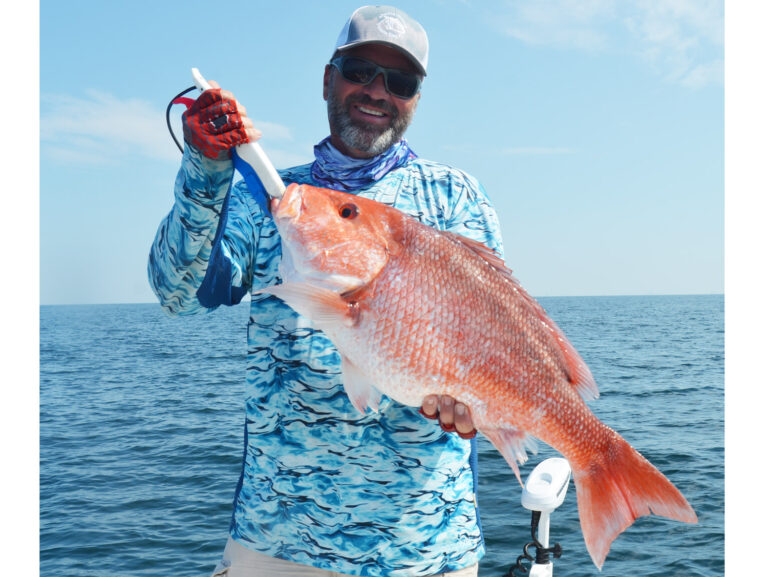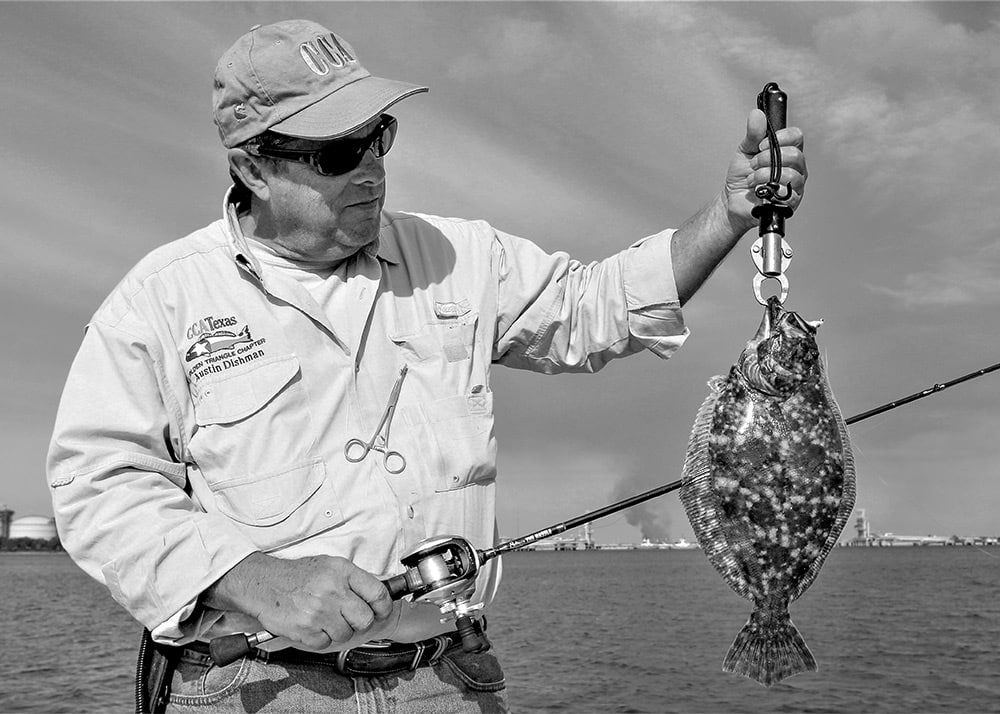
On the south end of Sabine Lake, on the Texas-Louisiana border, the mouth of a bayou creates a conveyor for flounder where it empties into the lake. They ride the incoming tide into the bayou and feed on shrimp, mullet and shad. Then, as the tide turns and begins to move out, Capt. Jerry Norris is more than likely going to be sitting at the mouth of this drain.
“When the fall migration of flounder begins, this is one place that I can hit day in and day out and fully expect to reel in several of these tasty fish,” he says. “It’s adjacent to Blue Buck Point, where lots of flounder stage before leaving the bay and heading to the pass and into the Gulf of Mexico.”
Norris has been working as a guide on Sabine Lake for over 30 years. Fall flounder fishing is one of his favorite times of the year.
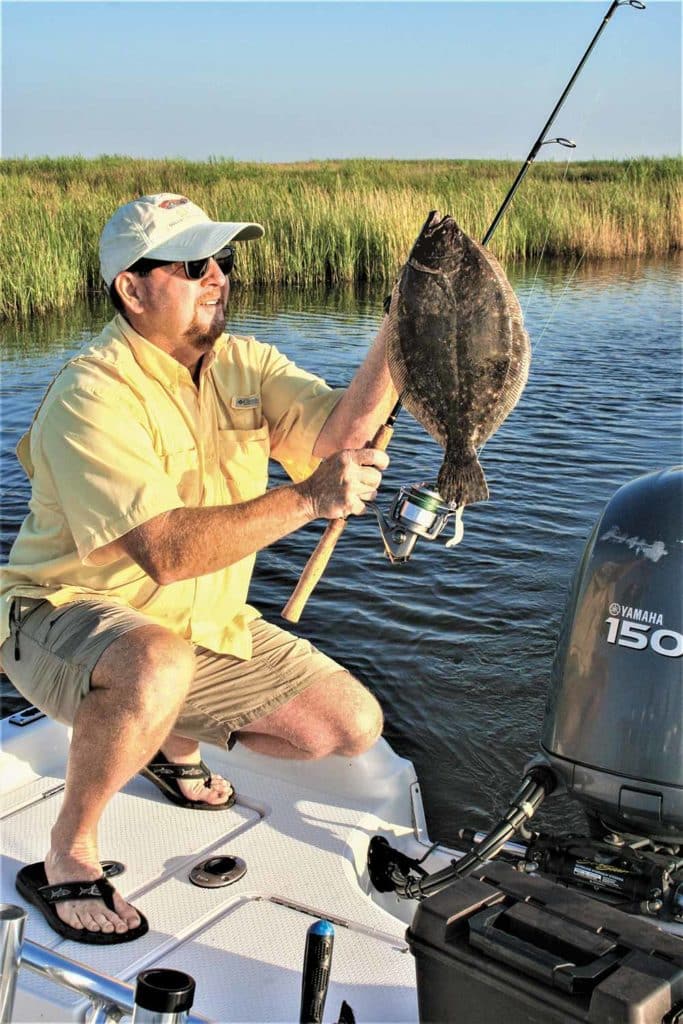
“A lot of people think the flounder is a mysterious fish and difficult to find and catch,” he says. “Nothing could be further from the truth. You just need to know where they will feed on any given day. Throughout most of the summer, they feed at the mouths of the drains on just about any bay. They will also hold along shallow flats. They are basically shallow-water feeders. And like most other game fish, they feed best on moving tides. It’s that simple.”
As far as flounder lures go, Norris says that in most situations he opts for a soft-plastic jig worked along bottom. He especially likes swimbaits in red shad, glow chartreuse, and red-and-white. The Yum Money Minnow is perfect.
“A swimbait with some sort of paddle tail puts out a lot of vibration,” Norris says. “You can scoot it along bottom on a steady retrieve, and flounder will eat it all day long. I’ll usually fish them on a 1⁄8-ounce Shad Assassin screw-lock jig head. That allows for a slower drop.”
On nearby Calcasieu Lake, about 20 miles east of Sabine Lake in Louisiana, Buddy Oaks with Hackberry Rod and Gun Club says they have one of the best fisheries for catching flounder on the Gulf Coast.
“The fall run can be absolutely spectacular,” he says. “We’ll use live shrimp and finger mullet during the migration from the bay to the Gulf. But soft plastics, like a Hackberry Hustler, can be tough to beat. Whether you’re using live baits or artificials, the trick is to be where the flounder lay up. That’s usually somewhere along the Intracoastal Waterway where the shallow flats load up with flounder.”
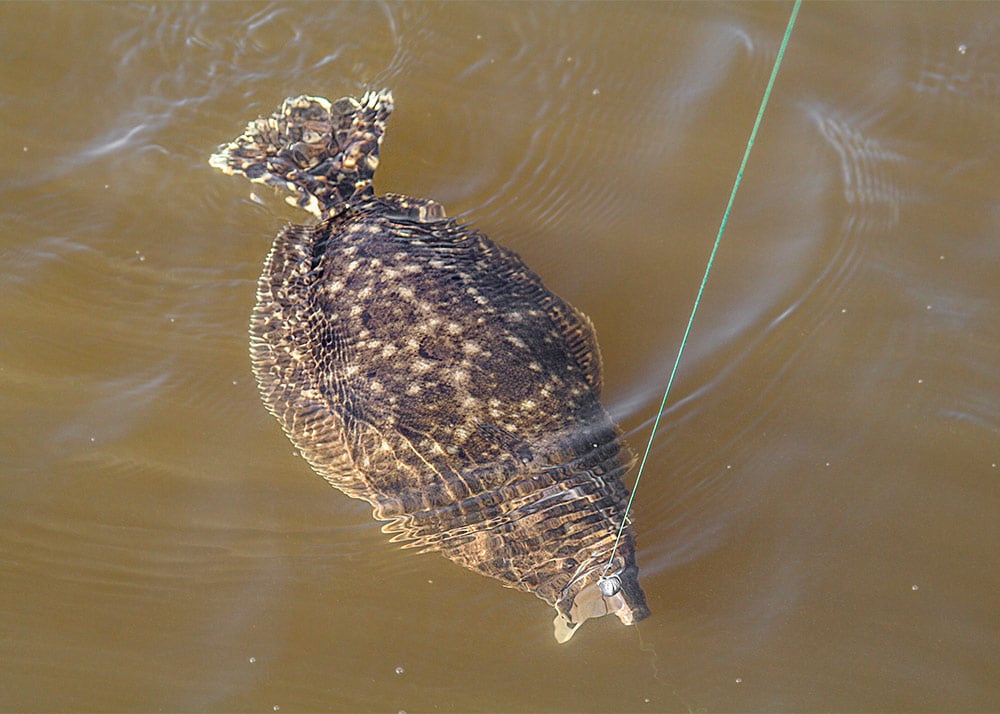
Oaks says that one of the best live bait rigs you can use to catch flounder on the ICW flats is a Carolina rig — the same thing that bass fishermen have used for years. It starts with a 1⁄4- to 1⁄2-ounce egg sinker. Thread the line through the weight and tie it to a 20-pound-test barrel swivel. Tie 18 to 24 inches of fluorocarbon leader to the swivel and tie a 4/0 Kahle hook at the business end.
It’s a simple rig but a proven winner for fall flounder fishing. This rig allows a flounder to pick up the bait without feeling the weight, which causes it to blow the bait out. The trick is to use just enough weight to get the bait to the bottom in a current.
Bill Panto, one of the better flounder fishermen along the Texas coast, specializes in fishing the passes, which hold flounder just about any time of year, but particularly during the fall run.
“I have a pretty simple plan to catching numbers of flounder,” he says. “I like to cover a lot of water. This allows me to fish more spots that flounder will hold in.
“I almost always use a Carolina rig. The trick is to use just enough weight to keep the bait on bottom yet allow it to roll with the current. It’s almost like free-lining a shrimp, except you allow the bait to drift along the bottom. When the line tightens up, I set the hook. It’s fun fishing that keeps me busy. I’m not just sitting on one spot waiting for fish to come to me. Instead, I’m covering lots of water and box some of the tastiest fish in the Gulf.”
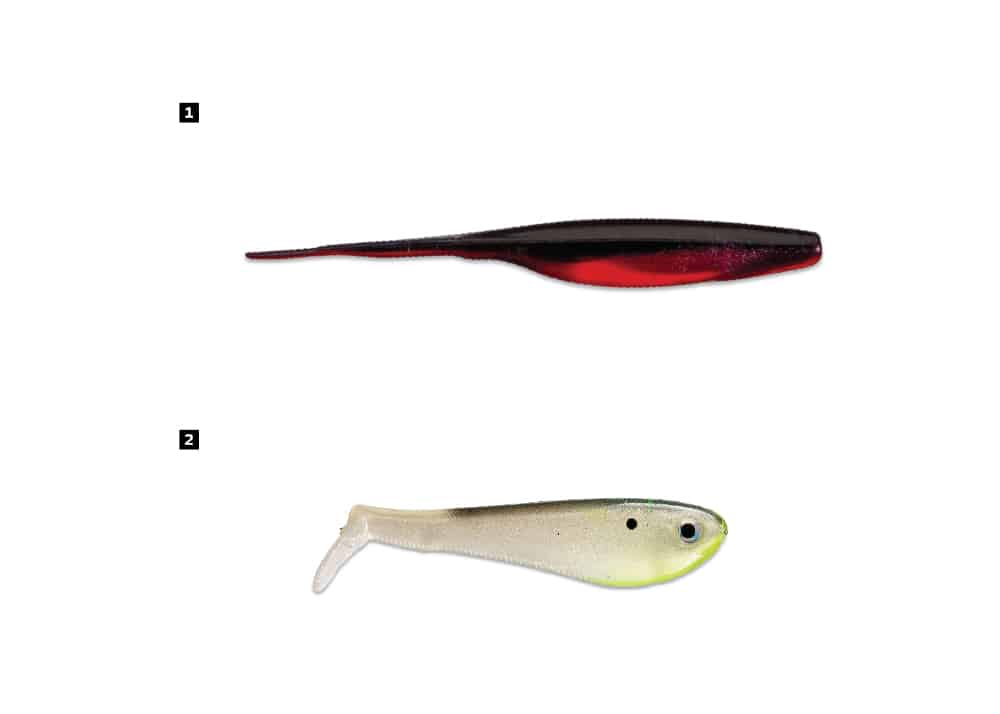
[2] Paddle tails such as the Yum Money Minnow create attractive vibration. Courtesy Bass Assassin; Yum Baits
Another effective way to fish live baits, like mullet and shrimp, is with a slider rig, a small float, and a 2-foot leader with a split shot and hook.
Fishing this rig is simple. Slide the float slowly across the surface, then stop and let the bait settle to the bottom. You don’t need to jerk the float; that spooks flounder. Just ease it along. One of the most popular places to catch the fall run of flounder is Sabine Pass, on the lower end of Sabine Lake. Sabine Lake flows into the pass, then through the jetties, into the Gulf.
“I’ve been flounder fishing Sabine Pass for decades,” Norris says. “The shallow flats, points, bulkheads, pilings and barges are all flounder magnets. Pylons in 5 feet of water running parallel to the shoreline are particularly good. The flounder hold down-current of the pilings.
“If I had to pick one best type of structure in the pass, it would be a long bulkhead, where flounder stack up. I’ll fish soft plastics and even 1⁄8-ounce Road Runner spinnerbaits along the bulkheads. Flounder will hold right up against them. That’s how I’ve consistently caught big flounder, in the 3- to 5-pound class.
“If I had to depend on one area to find flounder on any given day and night, it would be along the Intracoastal Waterway. The flats along the deep drop of the ICW are big-time staging areas for flounder. The backwater estuary bayous and marsh areas are good too.”
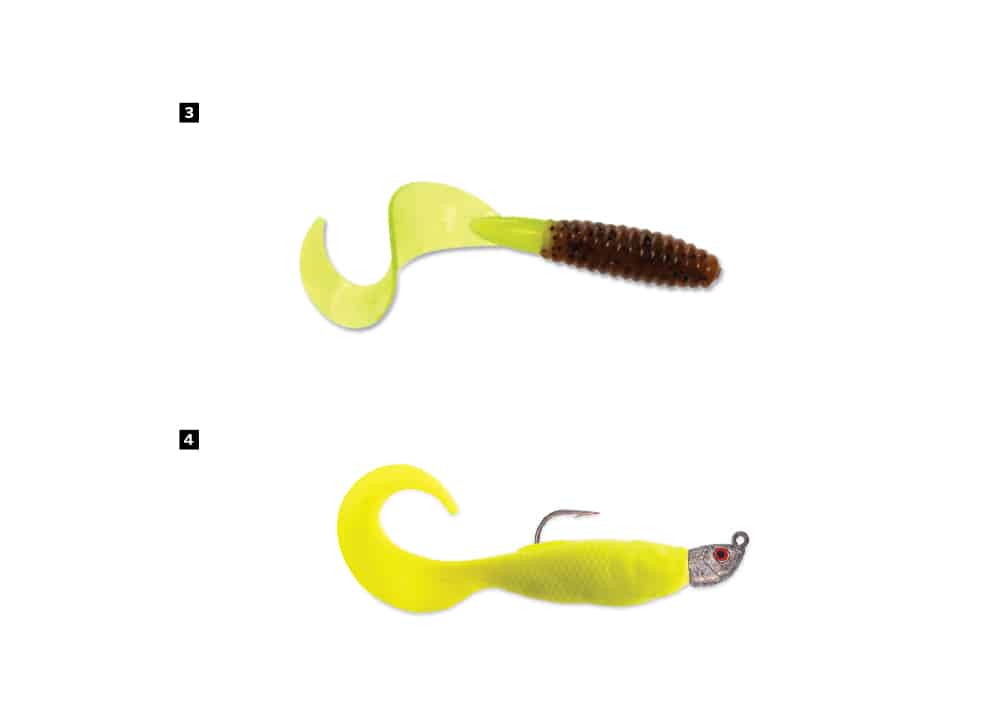
[4] The Berkley Gulp Swimming Mullet offers scent and enticing action. Courtesy Big Bite Baits; Berkley
The bayous on Sabine Lake and Calcasieu Lake offer miles upon miles of shoreline structure. Some of it is tall cane, and some is just marsh grass. Regardless of what type of shoreline vegetation you have, there is one proven tactic for catching lots of flounder. It involves pitching soft-plastic jigs tipped with a dime-size piece of fresh dead shrimp. Pitch the jig into pockets along the shoreline, where flounder wait to ambush mud minnows, finger mullet, shad and shrimp.
The best soft plastic for this fishing is a curly-tail jig, such as a 5-inch fat grub made by Big Bite Baits on a 1⁄4-ounce jig head. The pumpkin with a chartreuse curly tail is deadly in stained water on places like East Galveston Bay, Sabine Lake and Calcasieu Pass.
The fall flounder fishing run starts with just a trickle of movement to the Gulf. During September and October, it really perks up. That’s when you want to fish the lower ends of bays that funnel into a pass. During October, it’s usually best to fish the passes. As the migration slows toward the end of October, shift attention to the rigs from 1 to 5 miles off the coast in 15 to 25 feet of water. That’s where flounder stack up and can be caught while bumping jigs along bottom. And you can check out these tips for catching flounder in the winter and summer months.


